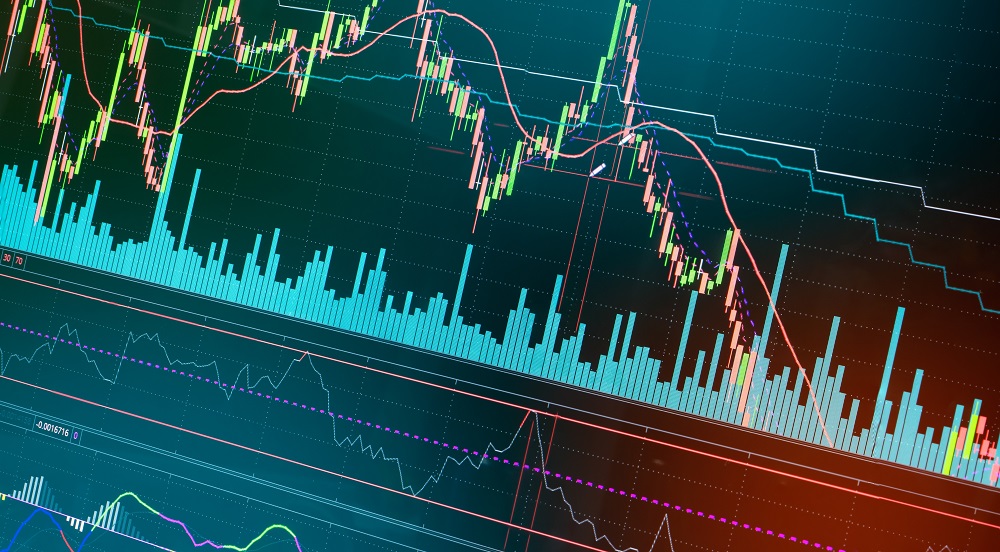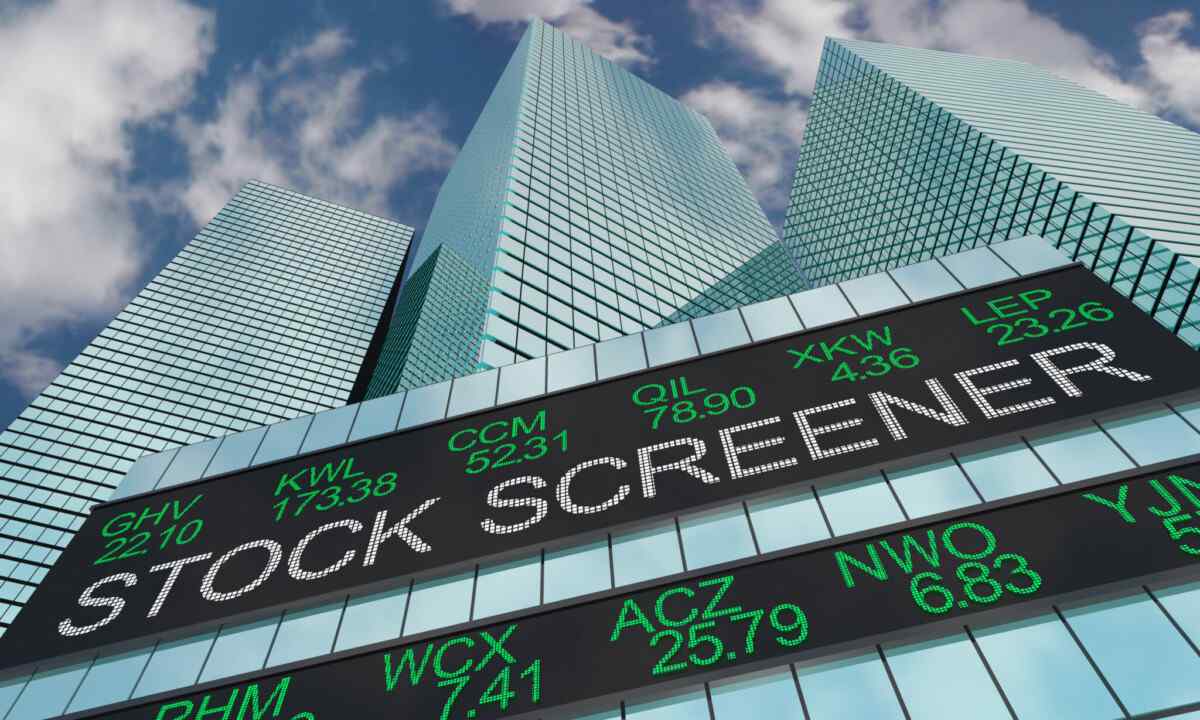Introduction
Making smart, well-informed decisions is essential while investing in the stock market. Insider buying, in which executives or large owners of a corporation acquire shares of their own company, is one important factor that investors frequently consider. The process of finding insider buying opportunities can be complicated, therefore many investors use stock screeners to help them. These systems may sort through mountains of data to find stocks that meet certain criteria linked to insider buying, which is useful for investors. By delving into the pros, cons, and frequently asked questions of using an Insider Buying Stock Screener, this tutorial hopes to offer helpful insights into making good investments in this way.
Stock Screener
Investors can narrow their investment options and find possibilities in the stock market with the help of a stock screener, a powerful tool. Users can set parameters such as price, market capitalization, sector, and financial factors to systematically screen stocks with this tool. Investors can quickly narrow down a vast assortment of stocks to those that match their individual tastes by using a stock screener. What follows is an analysis of stock screeners, including a breakdown of their features, classifications, and the best options available.
Use Of A Stock Screener And Its Advantages

Efficient Use of Time: A stock screener can help you save time, which is one of its main benefits. With thousands of equities traded every day, the stock market is always changing. Without having to do extensive manual research, investors can use a stock screener to quickly get a list of companies that meet their unique criteria.
In-Depth Evaluation: By narrowing the emphasis to companies that fit an investor’s investment approach, stock screeners make analysis more efficient. Investors can narrow their focus to a smaller subset of stocks by eliminating unimportant possibilities. That way, they may focus on possibilities that really fit their requirements.
Identifying Opportunities: Potential investing possibilities may slip between the cracks if stock screeners weren’t in place. Stocks showing certain patterns or traits that are in line with an investor’s investment objectives can be located by establishing precise criteria. By taking a proactive stance, investors can keep up with the ever-changing stock market.
Stock Screeners: A Variety
Essential Screening Tools: These filters look at financial indicators including return on equity, price-to-earnings ratio, and earnings per share. Investors seeking financially stable companies and leaning toward a quantitative approach will find fundamental screeners to be an excellent tool.
Technical Screeners: In order to find stocks that might have price fluctuations, technical screeners look at patterns in price and volume. Market patterns and possible entry or exit points can be better understood with the help of these screeners, which are popular among traders who depend on charts, trends, and technical indicators.
Screeners Are Modifiable: The ability to build bespoke screens according to certain parameters is provided by certain stock screeners. For investors whose needs aren’t met by off-the-shelf screeners, this option offers a personalized way to analyze investments.
The Top Choice For A Stock Screener
Finviz : One popular option is Finviz, which provides powerful filters and a broad variety of screening criteria. It offers real-time statistics and more features in the subscription edition, in addition to a free version, to meet the different needs of investors.
Yahoo Finance: Stocks can be filtered using Yahoo Finance’s extensive stock screener according to a number of parameters, such as industry, market cap, valuation ratios, and more. It provides other materials for in-depth analysis as well.
Zacks Investment Research: A robust stock screener with an emphasis on fundamental analysis is available from Zacks. Investors looking for a strong fundamental strategy for stock picking will find what they need in its extensive database of stocks and flexible screening choices.
How Can A Stock Screener Identify Insider Trading?
When it comes to identifying insider trading, not all stock screeners are made equal. While some screeners give more sophisticated capabilities like configurable alerts and comprehensive information on insider transactions, others offer more simple filters like tracking insider purchasing or selling activities. The secret is to choose a stock screener that has extensive insider trading screening features in order to improve the capacity to spot any instances of illicit trading.
Indicators Of Insider Trading
A strong stock screener for insider trading detection should include a range of indicators to help identify possible illegal activity. These indicators could include notable price changes, abnormalities in trading volume, or trends in insider buying and selling. Investors can spot questionable trading patterns that might point to insider trading and launch more research by analyzing these signs.
Alerts In Real Time
Giving out real-time notifications about insider trading activity is one of the most useful functions of a good stock screener. As a preventative measure, these notifications tell investors right away in the event of a big insider transaction. Real-time alerts can raise red lights, for example, if a company’s top executive unexpectedly sells off a sizable portion of its shares. This would motivate investors to investigate the matter and act quickly.
Evaluating Stock Screeners To Spot Insider Trading
Evaluating various choices carefully is necessary when choosing an appropriate stock screener for insider trading detection. Take into account important elements including the platform’s ease of use, the availability of extra features like technical analysis tools, and the depth and quality of the data it offers. Experienced investors’ reviews and suggestions can provide insightful information on the efficacy of different stock screeners, which can help with the decision-making process.
Important Data From A Stock Screener

Who Owns What Inside
The degree of insider ownership is an important underlying metric to think about. Executives, directors, and other significant stakeholders are considered insiders if their ownership percentage of shares is high enough in this measure. An indication of how closely insiders’ interests are knit with those of shareholders is a high level of insider ownership: insiders have a vested interest in the company’s success. For example, if the CEO has a large stake in the company’s shares, it shows that they are confident in its future.
Relative Buying And Selling By Insiders
One way to get a feel for how insiders are feeling is to look at the buying to selling ratio. The future of the company seems bright when the buying-to-selling ratio is strong. On the other hand, if there is a bigger ratio of selling to buying, it could mean that people aren’t confident or are worried. It may be a sign of good news or growth if multiple executives purchase shares.
When And How Often Insider Trades Occur
Important considerations include the insider trades’ timing and frequency. Optimism over the company’s future may be indicated by insiders’ consistent purchases over time. On the other hand, if insiders sell shares quickly and in large quantities, it could mean they are aware of concerns or difficulties. Potentially indicative of insider knowledge of the company’s financial performance is the sale of shares by insiders prior to unsatisfactory earnings.
Trading Patterns By Insiders
A more thorough analysis can be achieved by examining insider trading patterns. If insiders are consistently buying before good news, it could mean they have access to secret information. If you’re trying to limit your losses, selling before bad news can be a sign of that. By analyzing these trends, investors can learn about insiders’ motivations and actions.
Analysis Of Competitors
Due to differences in insider ownership and trading patterns, it is essential to compare insider activity within a certain industry. Insider ownership tends to be lower in other industries compared to technology businesses, where founders and executives often own considerable holdings. Investors can better understand what is normal or noteworthy with the use of industry-specific comparisons.
How To Spot Insider Buying By Utilizing A Stock Screener
Filters For Insider Transactions
You should use a stock screener that has filters made specifically for insider buying. Using these criteria, users should be able to determine the kind of insider transaction, like buying on the open market or exercising options. In order to weed out smaller, less important trades, the screener should also allow users to specify transaction size requirements.
Filters For Time Periods
Analyzing insider buying during a given timeframe gives it more significance. An effective stock screener will have filters that let users examine insider trading for a certain time frame, such the past month or quarter. With this function, you may zero in on insider purchases that have occurred recently, which could give you a better picture of how the market is feeling right now.
Filters For Market Capitalization
Think about how you want to invest and what kind of firms you would like to focus on. Filters for market capitalization are an important part of a good stock screener because they let users focus on firms that match their investing preferences.
A Stock Screener For The Purpose Of Detecting Insider Trading
Understanding Insider Selling
Understanding the fundamentals of insider selling is critical before exploring the complexities of utilizing a stock screener. This happens when people who know something that the public doesn’t know decide to sell their shares in a company. Such moves may indicate that investors aren’t optimistic about the company’s future. Or that they’re trying to profit from the stock’s possible overvaluation. Investors can gauge the possible effect of insider selling on the stock’s performance by identifying patterns of it.
Selecting A Trustworthy Stock Screener
Numerous stock screeners are available on the market, and they all have their own set of advantages and disadvantages. Choosing a trustworthy screener that provides extensive data on insider selling actions is the initial step. Popular solutions like Bloomberg, InsiderInsights, and Finviz make it easy to find insider selling trends with their flexible filters and search parameters.
Configuring The Screener
Once a stock screener has been selected, the following step is to configure its parameters in a way that will successfully detect insider selling. Modify the search parameters to include minimum transaction value, range of dates for transactions, and insider transaction type (sell). It may also be helpful to limit your search to certain executives or insiders who have substantial say over the day-to-day running of the business. One way to narrow down the results to relevant insider selling actions is to personalize the screener to your preferences.
Examining The Findings
In order to detect trends or significant insider trading, it is crucial to carefully examine the results after the screener runs. Be wary of numerous insiders selling at the same time or of a sudden, dramatic increase in sales volume relative to past trends. These tendencies can indicate that people aren’t optimistic about the company’s future or that they’re bracing for bad news. On the other hand, insider sales that occur infrequently or in isolation may not be as significant. Especially if they are related to specific financial goals or the need to diversify a portfolio.
Taking Other Influences Into Account
It would be a mistake to ignore insider trading just because it is important. Taking a comprehensive strategy means thinking about all the angles before settling on an investment. Think about the company’s future growth, the state of the industry, the competition, and the company’s financial condition. Instead of being the only factor in investing decisions, insider selling is just one piece of the picture.
Consulting Experts
It is wise to seek professional guidance for inexperienced investors or those who are having trouble understanding the results of stock screeners. To help investors understand the relevance of insider transactions and how they may affect a stock’s performance, financial advisers and investment specialists can provide insightful commentary. Their knowledge and experience help investors make better, more strategic decisions by easing the burden of insider selling analysis.
Using Stock Screeners To Expose Insider Trading: Case Studies

Insider Trading In The Notorious Enron Scandal
In addition to being one of the most notorious instances of corporate wrongdoing in history. Enron scandal also contained severe insider trading. Insider trading and other forms of deception led to the catastrophic collapse of the American energy giant Enron in the early 2000s. The identification of questionable trading patterns by a stock screener was critical in revealing this illegal activity. Just before bad news about Enron was officially announced, it was discovered that executives and employees were dumping their shares. These cases were flagged by the stock screener, which revealed that financial statements were manipulated and that debt was concealed. Disclosures contributed to Enron’s downfall, which in turn hurt investors financially . And highlighted the importance of stock screeners in identifying widespread insider trading.
The ImClone Systems Trade By Martha Stewart
A prominent insider trading case involving the biopharmaceutical company ImClone Systems ensnared Martha Stewart, a famous American entrepreneur and TV host. ImClone’s new medication application was denied by the U.S. Food and medication Administration (FDA) shortly before Stewart sold shares, which sparked suspicions of insider trading. By examining trading patterns, a stock screener was crucial in uncovering this illicit conduct. The screener noticed that Stewart’s stock transaction was timed suspiciously, suggesting that bad news was on the horizon. Legal consequences followed for Martha Stewart, who was accused of conspiracy, obstruction of justice. And providing federal investigators with false statements. Even in high-profile cases involving famous people, stock screeners can find insider trading, as this instance poignantly demonstrates.
The Insider Trading Scheme Involving Raj Rajaratnam And The Galleon Group
The founder of the Galleon Group and a former hedge fund manager, Raj Rajaratnam, became entangled in a massive insider trading fraud. With the help of insiders at several companies, Rajaratnam was able to trade and make a lot of money. There was a massive insider trading conspiracy that a stock screener helped uncover. Specifically, the screener found cases when trades were conducted just before major business announcements, which were recognized as anomalous trading patterns. The conviction of Rajaratnam was aided by this vital evidence, as well as by wiretaps and other investigative tactics. Stock screeners’ capacity to analyze trade patterns and reveal illegal activities that affect financial markets was on full display in the Galleon Group case. It highlighted their critical role in exposing intricate networks of insider trading.
Dangers And Restrictions Of Using A Stock Screener
Missing Information
Even while stock screeners provide a lot of data, investors shouldn’t put all their eggs in one basket. There may be insider trading that has gone unreported or hidden. Because the data given is based on what has been made public. It is crucial to supplement screener results with additional sources. Such as SEC filings and news stories in order to have a more full knowledge of insider behavior. It is as stock screeners may not catch illicit trading techniques or covert market manipulations.
No Background Information
The primary background behind insider transactions is sometimes missing from stock screeners. Despite their excellence at screening companies according to predefined criteria. Finding an insider who has purchased or sold a large number of shares is just the beginning. Just as important as taking action is comprehending why people are acting this way. If investors don’t know why an executive sold shares, for example, they might think it’s because of their own financial problems rather than a lack of faith in the company. If they want to make educated selections, investors should learn more about insider transactions.
Informative Delays
One major issue with stock screeners is that they use data that can have delays of several minutes to hours. Because insider trading possibilities can materialize at a breakneck pace in dynamic markets, this latency can be disastrous. To overcome this shortcoming, investors should ensure they are up-to-date on insider transactions. It is by supplementing the data provided by stock screeners with real-time information sources. Such direct feeds from exchanges or specialist financial platforms.
Negative And False Positive Results
There is still a chance of false positives or negatives when using stock screeners, even using algorithms. When screeners mistakenly mark a stock as being involved in insider activity, it’s called a false positive. On the other hand, when actual insider trading goes unnoticed, it’s called a false negative. Investments based on these inaccurate estimates might be a bad idea. To reduce the likelihood of insider trading, investors should verify stock screener results with other resources. And perform comprehensive due diligence before acting on them.
Small Personalization Options
Even if stock screeners have a lot of options for filters and criteria, they can not be flexible enough for investors with specific plans and preferences. Investors have different demands, and a one-size-fits-all solution might not work for them. To get around this, investors can look into various stock screeners or use platforms that let them customize their searches based on certain criteria. This guarantees that each investor’s screening procedure is tailored to their specific needs and objectives.
Conclusion
With the ever-changing world of stock market investments, investors can gain vital insights into prospective opportunities by using an Insider Buying Stock Screener. Investors may make better, more educated selections if they know how these screeners function, what criteria they use, and the risks involved. The purpose of this guide is to equip readers with the information they need to understand insider buying and improve their investment strategies for the long run.
Frequently Asked Questions
1. How Can You Use An Insider Buying Stock Screener?
One way to find stocks where insiders are buying shares is via an Insider Buying Stock Screener. Investors can use it to screen and filter stocks according to certain parameters connected to insider buying activity by examining publicly available data on insider transactions.
2. How Comes Insider Buying Play A Role In Investment Strategies?
Because it shows that those with close knowledge of the company are optimistic about its future, insider buying is often seen as a good indicator. The purchase of shares by executives and big shareholders may be seen as a sign of faith in the company’s performance, which could be a precursor to future achievements.
3. How Can An Insider Buying Stock Screener Be Implemented?
Buying from Inside With stock screeners, users can specify a number of parameters, such as market capitalization, the kind of insider transaction (purchasing), the size of the transaction, and the timing (for example, most recent insider buying). Investors can refine their search based on their interests and tactics with the help of these parameters.
4. Can I Trust An Insider Buying Signal From A Stock Screener Alone? If So, What Are The Dangers And Limitations?
Sure, there are some restrictions and risks. Incomplete data, a lack of context around insider trades, and a time lag are all potential issues with stock screeners. False positives or negatives could occur if you depend just on a screener. Additional investigation and due diligence must be conducted in addition to screener results.
5. How Can Investors Make The Most Of An Insider Buying Stock Screener While Minimizing Risks?
Investors can reduce their exposure to risk by verifying screener results with additional resources, like news stories and SEC filings. To make well-informed decisions, it helps to use real-time data sources, learn about the background of insider transactions, and be aware of the limits of stock screeners.


